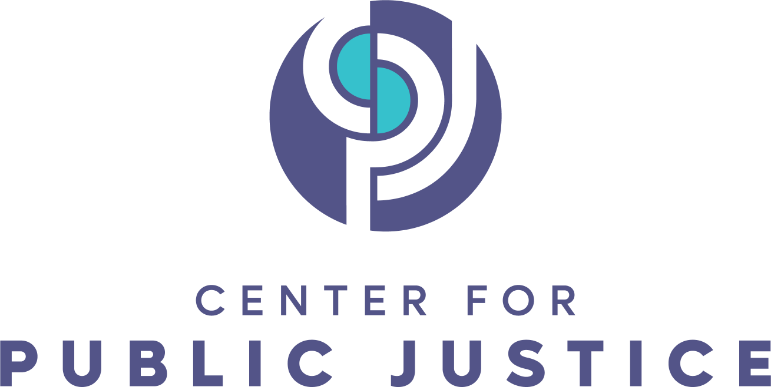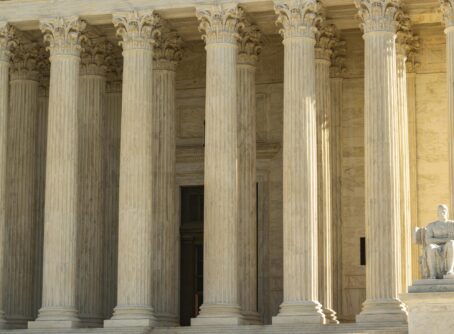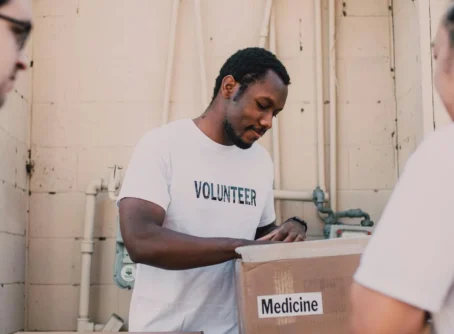Recently, the U.S. Conference of Catholic Bishops (USCCB) announced that it would not renew its longstanding cooperative agreements with the federal government related to refugee resettlement and unaccompanied children’s services. This decision marks an inflection point for Catholic institutional leaders, who must now reimagine how to fulfill their sacred calling to serve the stranger, especially refugees fleeing violence and persecution.
Archbishop Timothy P. Broglio, President of the USCCB, acknowledged that recent federal decisions have forced the Church to rethink its posture and partnerships in refugee work. “These are displaced souls who see in America a place of dreams and hope,” he said, naming the spiritual yearning that drives many to flee. Some of these individuals risked their lives supporting U.S. efforts abroad; others simply seek a place where they can “worship and pray safely as they know God calls them.”
Archbishop Broglio acknowledged that the Church’s refugee ministry now needs new spiritual imagination and innovative collaborators to reinvigorate it. “This difficult decision,” he said, comes in the wake of the federal government’s suspension of the Church’s long-standing cooperative agreements for refugee resettlement. With these agreements withdrawn and the programs drastically reduced, the Conference is being “forced to reconsider the best way to serve the needs of our brothers and sisters seeking safe harbor from violence and persecution.”
Refugee ministry is not just a service program. It is pastoral care. It is mercy incarnate. “The Gospel’s call to do what we can for the least among us remains our guide,” Archbishop Broglio affirmed. While the government may suspend cooperative agreements, the Church cannot suspend compassion. Religion reporter Kelsey Dallas of Deseret News summarized the stakes well: to continue its work, the USCCB must now “reorganize its infrastructure to take the focus off federal programs.”
Dallas also observed that recent remarks from the bishops about how federal money “never fully covered the cost” of refugee services appeared to respond to criticism from Vice President J.D. Vance. In a January 2025 CBS News interview, Vance questioned whether the Church’s refugee programs were motivated by charity or self-interest. But as the USCCB has stated plainly: while the Church has long partnered with the federal government to resettle refugees, this has always been a ministry first—a reflection of Christ’s call to serve the vulnerable, regardless of compensation.
Since Congress created the U.S. Refugee Admissions Program (USRAP) in 1980, the USCCB has worked with the State Department and Office of Refugee Resettlement to resettle tens of thousands of refugees each year. As the bishops note, “Every person resettled through USRAP is vetted and approved for the program by the federal government while outside of the United States.”
Refugee Resettlement and Public Justice: Sacred Commitments in the Public Square
Public justice begins with an understanding that the world is made up of many kinds of institutions, each with their own sacred purpose. Government is not the primary source of care, community, or meaning making—it exists to uphold justice by creating the conditions in which families, faith communities, and community-based institutions can flourish in their rightful roles. At its best, government does not replace civil society; it protects space for it. And in moments of moral clarity, government partners with it.
Refugee resettlement is one such moment. It is a powerful case study in institutional pluralism: where the state fulfills its responsibility to provide legal protections and basic infrastructure, and faith-based organizations step in to offer what government cannot—relationship, accompaniment, cultural wisdom, and spiritual nourishment.
Until the USCCB announced its withdrawal from government partnerships for refugee resettlement, ten national agencies served as the backbone of the United States’ refugee resettlement infrastructure under formal agreement with the federal government. Of those, seven are faith-based: Bethany Christian Services, Church World Service, Episcopal Migration Ministries, Global Refuge (formerly Lutheran Immigration and Refugee Service), HIAS, the U.S. Conference of Catholic Bishops, and World Relief. These institutions were not founded to expand federal programmatic capacity—they were founded to live out sacred convictions. They were formed in response to sacred convictions—convictions about the dignity of the human person, the moral imperative of hospitality, and the responsibility to love and serve the stranger.
As Rabbi Rachel Grant Meyer of HIAS has explained, this work is not a side expression of faith—it is central:
“As a rabbi, a Jewish person of faith in general, my Jewish faith doesn’t just inform my work with refugees, it demands it. Welcome of the stranger is a core Jewish value. It is fundamental.” She continued, “We used to advocate for welcoming refugees because they were Jewish. Now, we welcome refugees because we are Jewish.”
Jewish tradition, as she pointed out, is “unequivocal,” repeating the call to care for refugees 36 times in the Torah—“more than anything else that is taught about in the sacred text.” Not only must strangers be welcomed; they must be loved. As she put it, the call is to “want for the stranger what you want for yourself.”
This deep theological grounding mirrors parallel commitments in Christian and Muslim traditions. It is not just a social value, but a sacred command. The Prophet Muhammad himself was a refugee. Imam Shamsi Ali explained that in Islam, “human services are signs of our faith itself,” and “God Himself is called Merciful—but that must translate into human action.” These traditions offer not simply charity to the stranger, but a covenant of care.
Yet these sacred-public partnerships in refugee resettlement—while long established—require ongoing vigilance. Public justice demands that the government cultivate space for a pluralistic civil society, where secular, faith-based, and spiritually rooted institutions can live out the core callings of their missions. For religious organizations, this includes the freedom to serve in ways that may not conform to shifting political priorities or federal standards. When refugee policy swings drastically from one administration to the next, it not only tests institutional resilience—it also raises difficult questions about the conditions attached to public funding, and whether such funding supports or undermines an organization’s ability to remain rooted in its sacred identity.
Navigating Funding, Integrity, and Institutional Freedom
So what happens when these faith-based organizations must rely on public funding to fulfill a sacred mandate?
This leads to two interrelated concerns that must guide how faith-based organizations engage government—regardless of which political party is in power:
First, how much should the federal government invest in civil society partnerships, and in what areas? Government funding is not neutral. Where it flows determines whose priorities are elevated, which organizations gain power, and which communities are left behind. Should religious institutions follow the money, or should they push back when those funds lead them away from the communities and issues their traditions uniquely call them to serve?
Second, under what conditions should faith-based organizations partner with government at all? Public funding can expand an organization’s reach, but it also brings oversight, compliance burdens, and the temptation toward mission drift. What does it mean to accept funding without compromising spiritual integrity? Should religious nonprofits build financial models that allow them to walk away when political winds shift?
These are not abstract policy debates. They are questions of discernment. Government funds can serve our pluralistic society—or quietly reshape a religious institution until it no longer looks like itself. The question is not simply whether a group can get public dollars, but whether it should—and under what terms.
A sacred-centered approach to public life refuses to define faith-based success by grant totals or agency invitations. It begins with mission, not metrics. It asks: Are we engaging government in a way that reinforces our sacred commitments, or are we being reshaped by priorities that do not belong to us?
This discernment is particularly urgent in refugee resettlement, where the state plays a necessary but limited role. Government can approve applications and arrange logistics—but it cannot offer what sacred communities provide: relational hospitality, intergenerational care, trauma-informed accompaniment, and spiritual belonging. These are not fringe offerings. They are essential to a refugee’s ability to flourish.
And they are essential to the public square. Faith-based organizations do not just deliver services. They embody a vision of the good that is rooted in the Sacred, addresses the material and metaphysical elements of life, and offers an interdependent vision of flourishing for individuals, families, civil society and the natural world.
In 2017, at the beginning of the first Trump administration, I attended a Princeton conference called “Seeking Refuge: Faith-Based Approaches to Forced Migration.” I recently revisited some of the comments made there during several roundtable discussions and the sacred stories told seemed particularly relevant for this moment. One such comment came from Joel Charny of the Norwegian Refugee Council. He reminded us that the Jewish call to care for refugees is “at the heart a creation story itself.” According to Midrash, God created humanity from the dust of all four corners of the earth, “so no one can say to another, you are not my family.”
Faith leaders across traditions echoed that sentiment. Dr. Daniel O’Neill pointed to the biblical cities of refuge—each with names meaning “set apart,” “shoulder,” “collaborate,” “protect,” “lift up,” and “enclose with joy”—as a template for today’s refugee engagement. Imam Shamsi Ali spoke of the Islamic principle of one body: “Any harm to one person is a harm to all.”
These sacred teachings do not fit neatly into policy documents. But they are the moral bedrock for refugee resettlement. And when federal partnerships are reduced or cut off, faith-based organizations must remember: their authority does not come from contract renewals. It comes from a sacred calling.
That does not mean religious freedom claims will always prevail in court. Often, they won’t. But even when legal avenues are closed, the spiritual cost remains real. When a faith-based organization cannot live out its sacred mandate because public funding has been conditioned, distorted, or withdrawn, it suffers—not only in its capacity to serve, but in its capacity to remain faithful.
This is why it matters that we reframe religious freedom not merely as a legal protection, but as a normative framework that allows faith communities to fully live out their identity in public life. As Rabbi Grant Meyer described, HIAS once organized a ritual of kriah—the traditional Jewish mourning practice usually reserved for the loss of a family member—to grieve the refugees their community could no longer welcome. “We transformed this ritual from something normally reserved for immediate family members to apply to refugees, symbolically bringing about their family status.”
This is what sacred-centered public life looks like. It is not pragmatic accommodation to power. It is storied, soul-centered participation in the life of the world, animated by theologies of refuge, covenant, and kinship. It is about remembering that the measure of faith-based engagement is not continued funding or insider status, but whether we have remained faithful to what God has called us to do.
A Sacred Invitation to Reimagine Refugee Ministry
The Church now stands at a threshold moment—not one of retreat, but of renewal. No longer bound by federal contracts to structure its refugee response, the Catholic Church is invited into a deeper vocation: not merely to manage crises, but to lead with moral imagination. This is a rare opportunity to reimagine refugee ministry in ways that draw more freely from the Church’s spiritual depths and cross-traditional alliances.
This reimagining could begin with intentional self-limitation—setting internal caps on federal funding to ensure that no single revenue stream reshapes the mission. It might mean cultivating relationships not only with other Christian denominations but also with Muslim, Jewish, and interspiritual organizations. Potential partners may be found through spiritually innovative groups such as Sacred Design Lab—who accompany the spiritual but not religious (SBNR) population. Sacred Design Lab is already building frameworks of embodied service and moral formation that echo Catholic social teaching in unconventional and sometimes surprising ways.
Catholic institutions could also draw more deeply from the tradition of the gift economy: co-sponsoring families through parish networks, hosting mutual aid initiatives, and reviving cooperative models of accompaniment that refuse to reduce the refugee to a “client.” In these models, the neighbor is not served as a number or case file, but received as a bearer of shared human dignity.
Many spiritual traditions already uphold these ethics: hospitality not as transaction, but covenant; care not as labor to be outsourced, but as sacred work offered communally. By collaborating across theological, cultural, and philosophical lines, sacred-centered organizations can help form an interwoven ecology of sanctuaries—networks of belonging that neither depend on nor reject the state, but move alongside it with moral clarity and grounded conviction.
This kind of architecture also redefines what sustainability looks like. Rather than anchoring ministry in precarious government contracts vulnerable to politicization, these sacred ecosystems can be rooted in diverse and resilient funding streams—religiously aligned endowments, ethical business partnerships, religious and spiritual donor advised funds, and even secular foundations willing to invest in spiritual pluralism. These models refuse the false binary between political relevance and spiritual depth.
Sacred traditions do not all agree on the size or structure of government, but they speak with a shared urgency on this point: offering refuge is a central sacred commitment. Throughout Scripture, political communities—Pharaoh’s Egypt, Herod’s Judea, Caesar’s Rome—are judged not only by their laws or power, but by their treatment of the vulnerable, especially the foreigner in their midst.
Even in the earliest periods of Christian, Jewish, and Islamic history, when most refugee support came from within religious communities themselves, there remained a foundational expectation that governing authorities would, at the very least, ensure safe passage. Sanctuary demands more than shelter. It requires legal permission. It requires political space.
Sacred texts are clear: “Love the stranger, for you were strangers in Egypt” (Deuteronomy 10:19). “I was a stranger and you welcomed me” (Matthew 25). “Those who migrate for the sake of God shall be shown God’s mercy” (Qur’an 2:218). These are not mere spiritual lip service.. They are the grammar of sacred hospitality. They shape not only the moral conscience of believers, but the political imagination of those who take their faith seriously.
Sacred music carries this theology as well. As a daily spiritual rhythm in our household of two young living children, we have committed to learning a new hymn every month. A few of our favorites reflect powerfully God’s love, and our responsibility, for those seeking sanctuary and refuge. Recently, we committed a month to learning Fanny Crosby’s “He Hideth My Soul” This hymn offers more than devotional comfort—it gives voice to a theology of refuge rooted in the biblical imagination. The line, “He hideth my soul in the cleft of the rock that shadows a dry, thirsty land,” draws directly from the Exodus story, evoking God’s provision not as escape, but as shelter carved within the very boundaries of suffering. This is the kind of spiritual architecture the Church must recover in times of displacement—when the land feels barren, when political structures no longer offer sanctuary, when systems built to protect instead abandon. For institutions accompanying refugees today, this hymn speaks across centuries: God does not remove us from the wilderness, but meets us there—with shadow, with presence, with space to breathe. The theme of sanctuary in God and in fellow image bearers echoes as a call not only to spiritual freedom, but to spiritual responsibility. And this responsibility is not only an individual, private calling, it is a sacred calling of Christ-centered and other religious and spiritual institutions who bring individuals of common call together.
As the USCCB and other faith-based agencies adjust to a future with fewer government supports, they are not left adrift. They are accompanied—by the sacred texts they have always preached, the songs their communities have always sung, and a community of co-believers, past and present, who remind us that sacred-centered service does not begin with a grant or collaborative agreement from the federal government. For those of us who claim Christ as Lord Over All, it begins with a babe in his mothers arms, making the long journey to Egypt, where safe passage is given. In the words of singer songwriter Jon Guerra:
“I need to know there is justice
That it will roll in abundance
And that you’re building a city
Where we arrive as immigrants
And you call us citizens
And you welcome us as children home.”
Chelsea Langston Bombino is a believer in sacred communities, a wife, and a mother. She serves as a program officer with the Fetzer Institute and a fellow with the Center for Public Justice.



